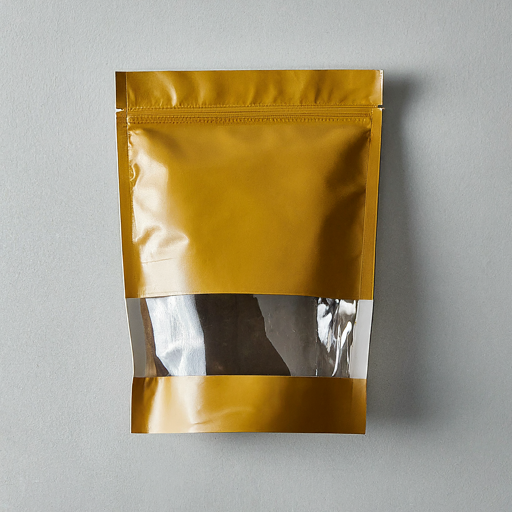Mylar Bag Production Process
- All Pack Supply

- Aug 14, 2024
- 4 min read
Mylar bags, those shiny, airtight pouches that protect everything from coffee beans to pet food. But what goes into making these versatile containers? Typically a polyester film coated with aluminum. This combination provides the bag's signature barrier properties, protecting its contents from light, oxygen, moisture, and odor.
Polyester, or polyethylene terephthalate (PET), is a strong, flexible plastic that forms the base of the film. It's chosen for its durability, clarity, and resistance to chemicals. The aluminum coating is applied through a vacuum metallization process, where aluminum is vaporized and deposited onto the polyester film. This thin layer gives the bag its reflective shine and provides an excellent barrier to light and oxygen. Thinner films are often used for lightweight products, while thicker films are ideal for heavier or more sensitive items. The choice also depends on the desired level of barrier protection and the bag's intended use.
Preparing for Production
Before the film can be transformed into bags, it undergoes several preparation steps. First, it's cleaned to remove any impurities that could affect the printing or sealing process. Next, the film is corona treated. This process creates tiny holes on the surface, improving the adhesion of inks and coatings. The film is then wound into large rolls, ready to be fed into the printing and converting machinery.
Ink and Design
Mylar bags often have vibrant, high-quality graphics. To achieve this, specialized inks are used. These inks must adhere well to the polyester surface and withstand the heat and pressure of the printing process. Additionally, they need to be food-safe for packaging food products.
The design process involves careful consideration of several factors. The artwork should be high resolution to ensure sharp print quality. The color palette is crucial, as some colors may appear different on the metallic surface of the mylar. Designers also need to account for the bag's shape and size, as well as any additional features like zippers or tear notches.
Purpose of Clear Windows
Many mylar bags incorporate transparent windows, allowing consumers to visually inspect the product within. This feature is particularly valuable for products where appearance is a key selling factor, such as coffee beans, candy, or baked goods. The window entices customers by showcasing the product's quality and freshness.
These windows are typically constructed from a clear polyester film. This material boasts excellent clarity, enabling a near-unobstructed view of the contents. Additionally, it shares similar properties with the mylar film, ensuring compatibility during the lamination process.
The window creation process involves meticulous attention to detail. First, a custom die is crafted to precisely match the desired window shape. This die functions like a cookie cutter, precisely punching the designated window shape into the aluminum-coated mylar film.
Following the creation of the window opening, a separate layer of clear polyester film is positioned over the opening. This lamination process essentially bonds the clear film to the mylar film, creating a seamless window. Precise alignment and flawless lamination are paramount to achieving a clear, bubble-free window. Any imperfections, such as misalignment or air bubbles trapped between the films, can significantly detract from the bag's overall appearance and potentially compromise the product's freshness.
While seemingly straightforward, achieving a flawless window can be challenging. Maintaining precise alignment during lamination and ensuring a complete absence of air bubbles requires expertise and specialized equipment.
Adding Functionality: Tear Notches and Zippers
Tear notches are small perforations along a seam of the bag that allow for easy opening. They are typically created using a die-cutting process. The placement and size of the tear notches are essential for ensuring a clean and controlled opening. Child-proof zippers are a common feature on mylar bags containing products un-intended for children. These zippers require a specific level of force to open, making it difficult for young children to access the contents. The zipper mechanism is usually integrated into the bag during the sealing process.
Overcoming Challenges
Designing and producing mylar bags is not without its challenges. One common issue is ink adhesion. If the ink doesn't adhere properly, it can scratch off or smudge. This can be caused by factors such as improper corona treatment or incorrect ink selection.
Another challenge is maintaining consistent film tension during the production process. Variations in tension can lead to wrinkles, creases, or other defects in the finished bags.
Additionally, the design of the bag must be carefully considered to ensure it meets the specific needs of the product being packaged. For example, a bag for coffee beans might require a one-way degassing valve to release carbon dioxide, while a bag for electronics might need added protection against static electricity. Mylar bags are a testament to the versatility and innovation of packaging technology. From the careful selection of materials to the precise application of inks and features, the creation of these bags is a complex process that requires expertise and attention to detail.
Ready to elevate your product with premium mylar packaging? All Pack Supply offers a wide range of customizable mylar bags to suit your needs. Our expert team can guide you through the design process and ensure your packaging stands out on the shelves. Contact us today to get started on your next project!





Comments